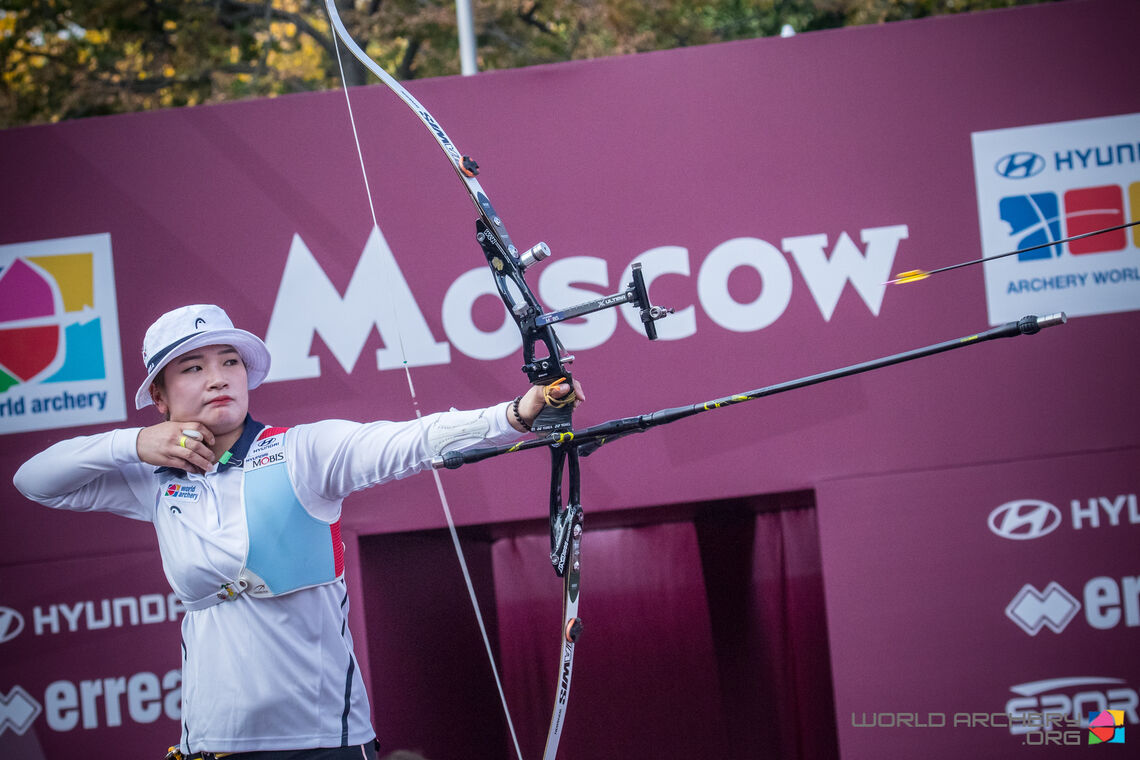
Recurve
Recurve is the bowstyle used at the Olympic Games.
The recurve bow is the modern evolution of traditional bows that have existed for 1000s of years. The limbs positioned at the top and bottom of the bow curve back away from the archer at each tip. This is what gives the ‘re-curve’ its name.
Recurve has been the bowstyle used at the Olympic Games since archery’s reintroduction to the programme in 1972. The rules for the recurve bow have evolved with technology and competitive standards but have remained largely unchanged since World Archery was founded in 1931.
To shoot a recurve bow, an archer holds the grip, lifts their arms up to shoulder height and pulls the string back to their face using their fingers. At full draw, they aim at the target through a sight and open their fingers to release the string. The energy stored in the bent limbs transfers through the string and into the arrow, sending it downrange to the target. Drawing a competitive recurve bow can require more than 20 kilograms (50 pounds) of force, and an arrow shot from a recurve bow can travel at speeds of over 200 kph.
Modern recurve bows are built using technologically advanced materials, including laminated carbon fibre and carbon foam in the limbs, but many manufacturers integrate natural materials such as bamboo. The riser, or handle, of a recurve bow is often made of aluminium or carbon fibre.
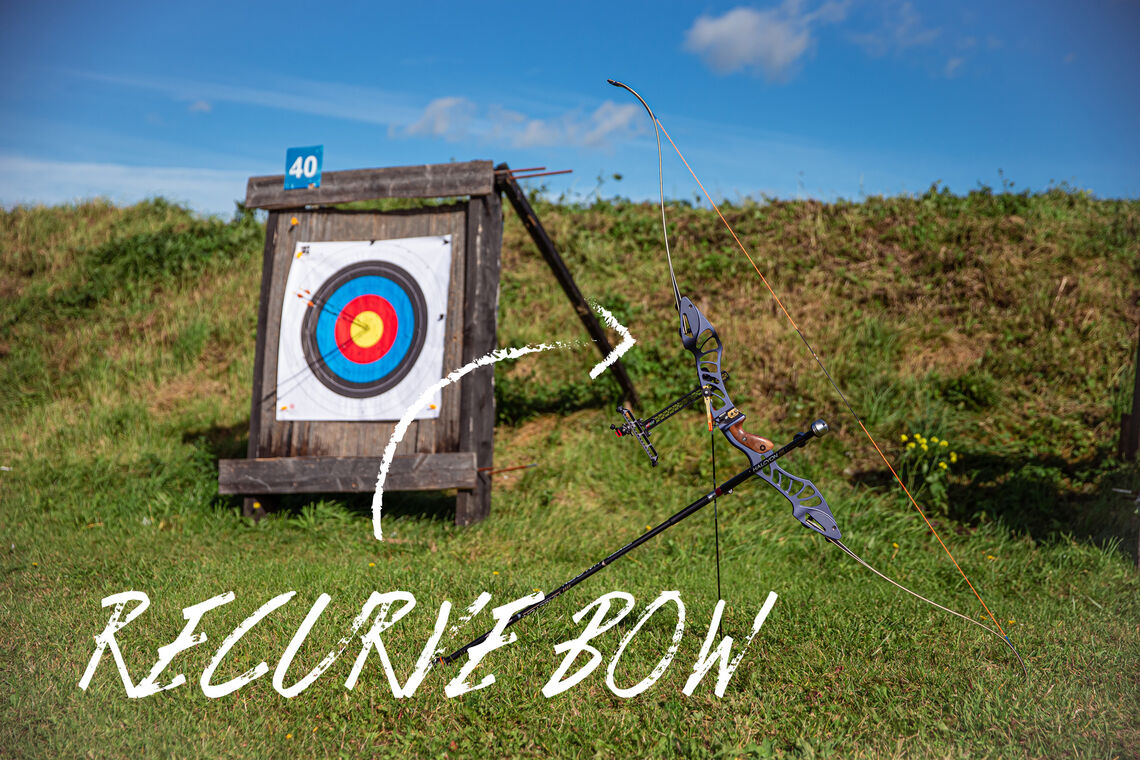
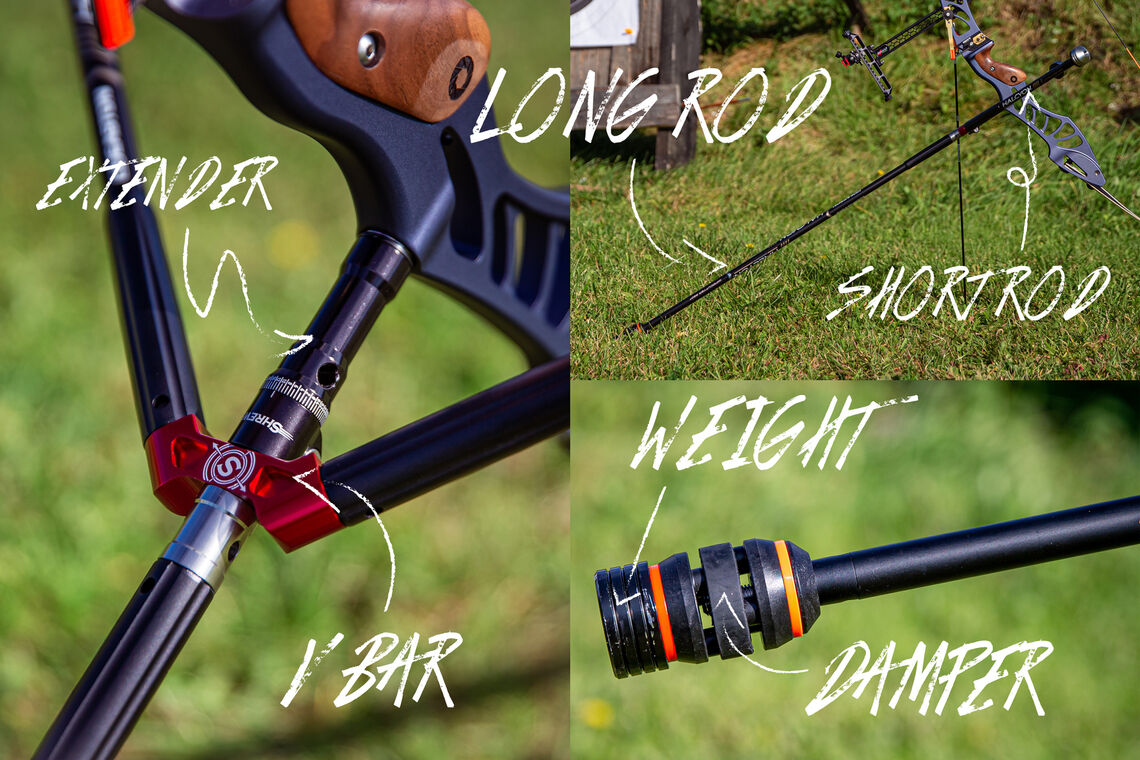
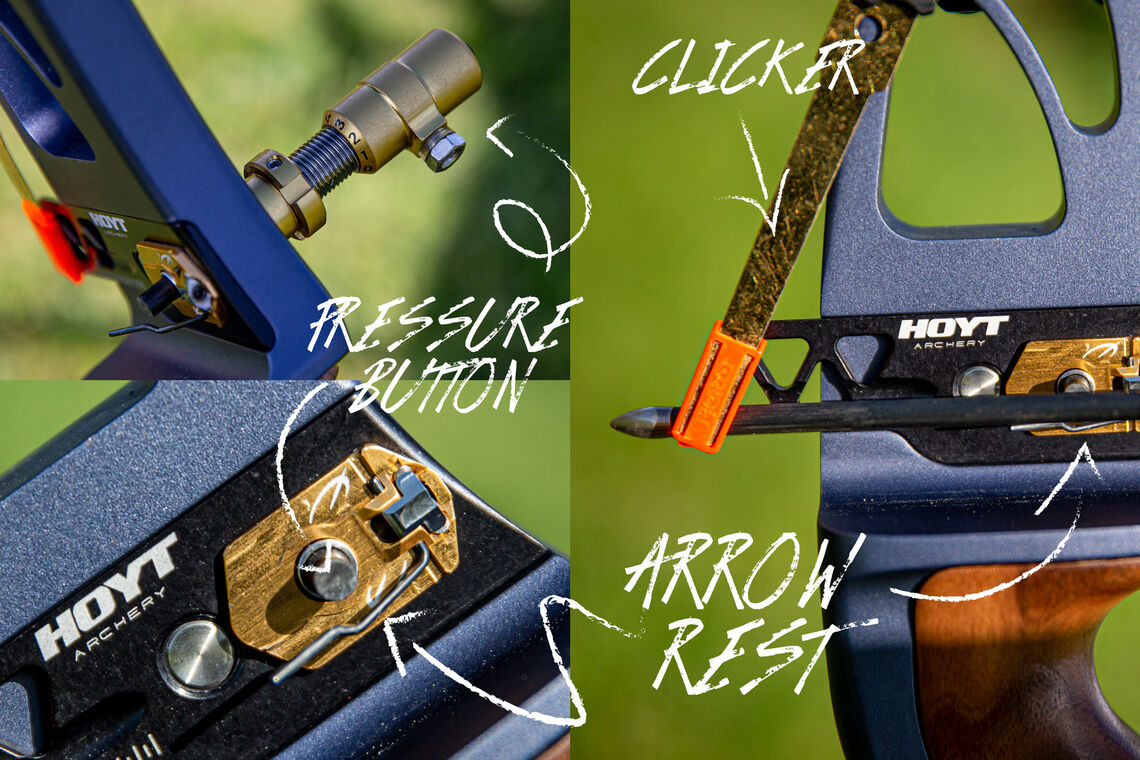
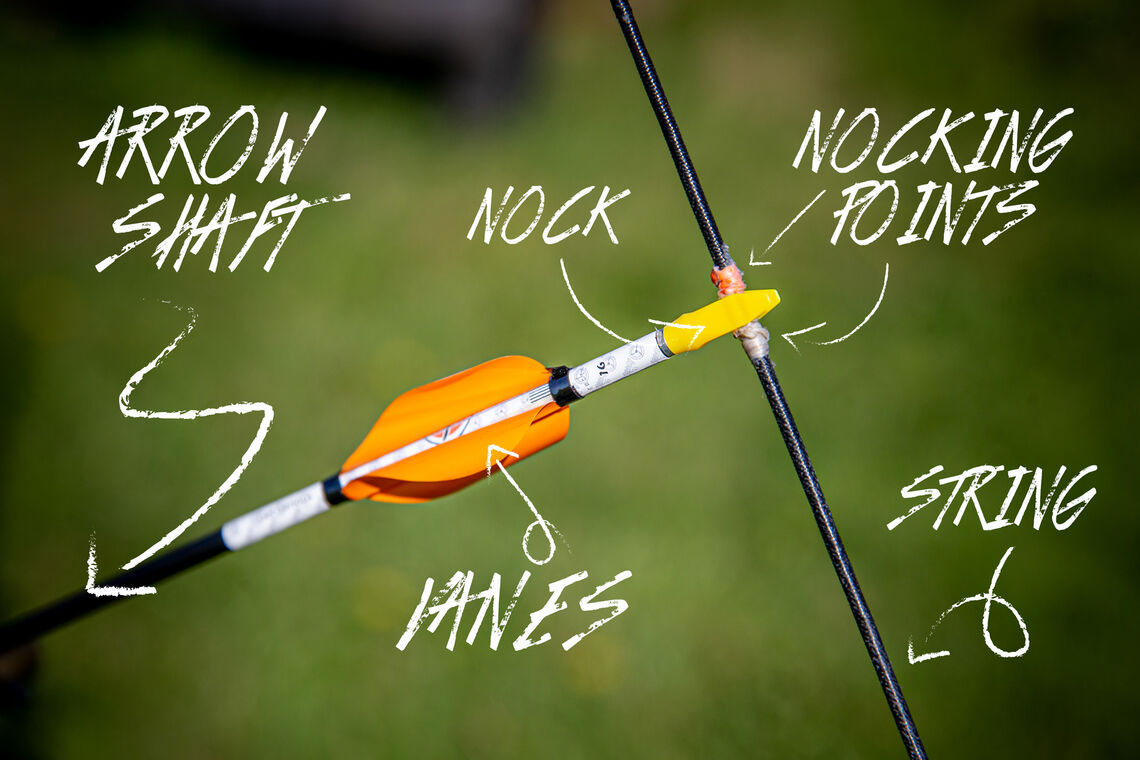
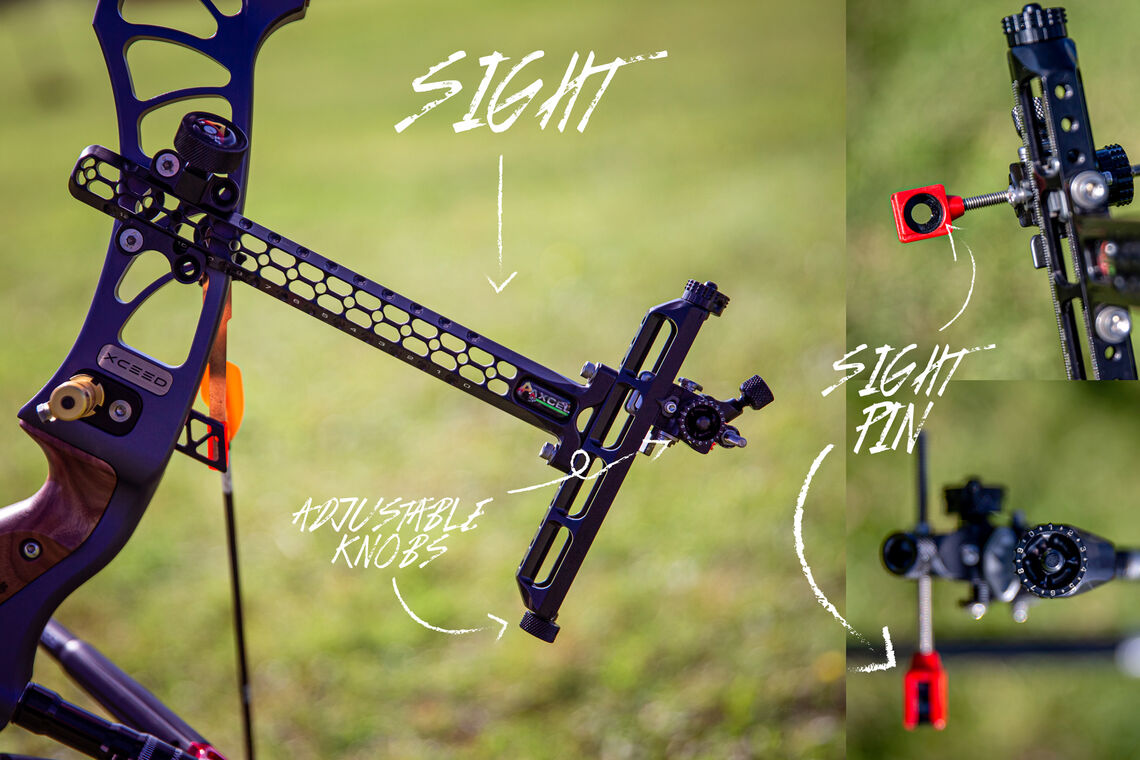
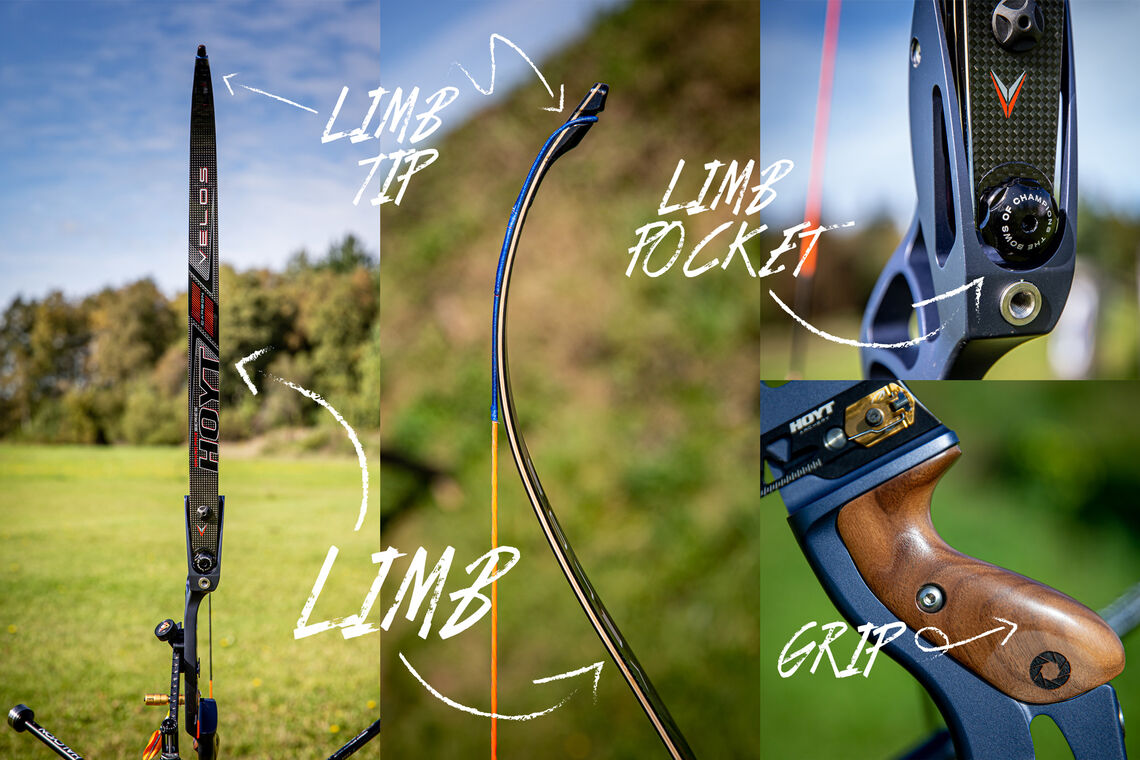
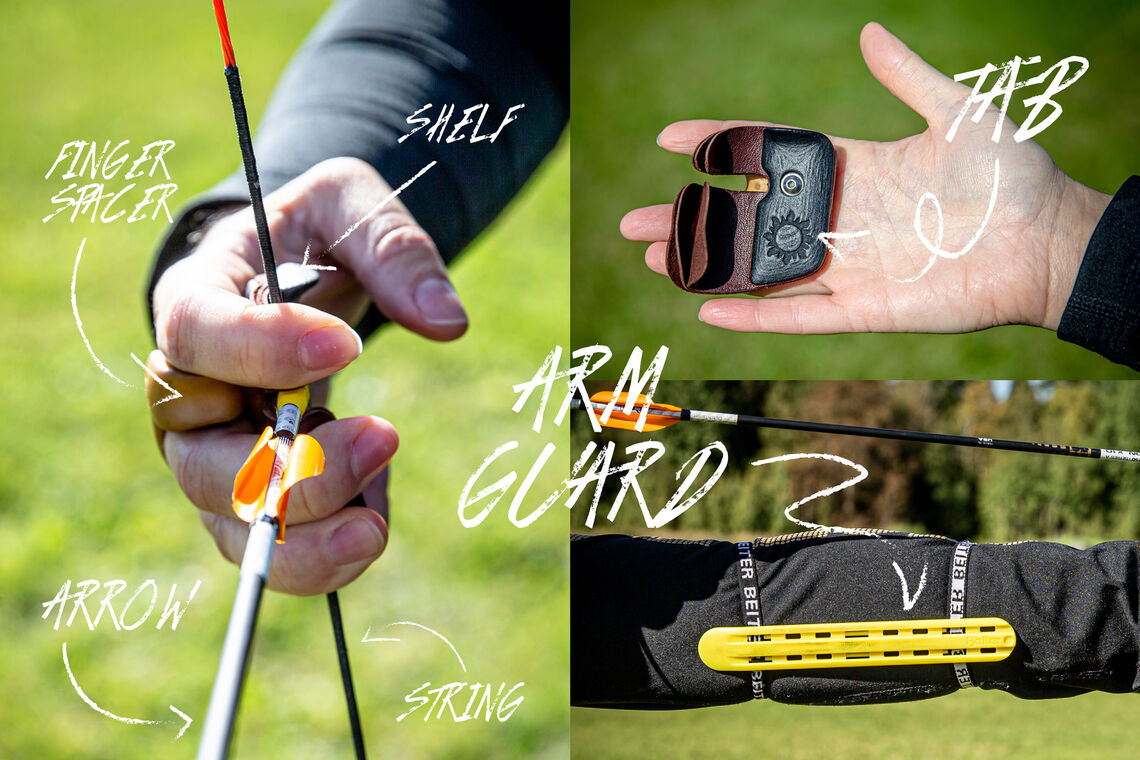
Equipment
The riser of a recurve bow is the handle in the centre that acts as the base to which the limbs, which often detach for transport or storage, are connected. The limbs are held under tension by a bowstring that loops around each limb tip.
The adjustable sight is also attached to the riser and holds a sight pin, which is what the archer uses to aim at the target. Stabilisers – including long rods that protrude from the front of the riser, short rods that protrude to the sides or back, and dampers – help to balance the bow and reduce vibration when the arrow is released.
There are a number of small essential accessories that are used by recurve archers.
Arrows clip onto the bowstring between nocking points, which are dimples fixed on the string. They sit in the bow on an arrow rest and usually against a pressure button and under a clicker, which is a device that checks the draw length. The button is a spring, which depresses when the arrow is released and ensures the arrow flies straight as it leaves the bow, combatting the horizontal oscillation caused by the fingers leaving the string. (This is known as archer’s paradox.)
Recurve archers wear finger tabs to protect their fingers from the pressure of the string, arm guards to protect their forearms from the sting of an impact and chest guards to keep clothing out of the path of the string on release. A finger sling is worn on the hand holding the bow so that the archer does not have to grip the handle. This is why the bow swings when it is shot.
Skill
Shooting a recurve bow requires physical conditioning, control and the ability to replicate the same movement and timing consistently every time an arrow is shot – particularly in stressful conditions. It is fairly easy to shoot a recurve bow well, but achieving quality results consistently requires practice.
There are three distinct phases to the process of shooting a recurve bow.
In the first phase, the archer must raise the bow and draw the bowstring to their face. As the limbs bend, they collect the energy that will send the arrow downrange. In the second phase, which is the most crucial, the archer aims at the target and executes the shot, releasing the string from their fingers and putting the arrow in flight. And in the third phase, the archer concludes his shot process by maintaining a follow-through position long after the arrow has left the bow.
The archer must complete his process while contesting both internal and external distractions. Internal distractions include a lack of focus or confidence, or increased stress, while external distractions include the wind, weather and noise.
A deviation of 1 millimetre in the angle of the arrow upon release can result in an arrow hitting the target 20 or more centimetres away from the intended point of impact at 70 metres.
Competition
The recurve bow has been used at the Olympic Games since archery became a permanent fixture on the programme in 1972. It is also used at the Paralympic Games and the World Games, and nearly all major tournaments organised by World Archery, including the World Archery Championships and the Hyundai Archery World Cup.
Recurve archers at international competitions in the target archery discipline shoot over distances of 70 metres at a target face measuring 122 centimetres in diameter, with a 10-ring measuring 12.2 centimetres in diameter.
The qualification phase consists of 72 arrows, after which archers are ranked by their total score to determine the seeds for matchplay. The eliminations phase consists of head-to-head brackets in which the winner of each match advances and the loser is eliminated.
Matches are decided using the set system in which the goal is to reach six set points in individual competition or five set points in mixed team and team competitions. After each set is shot and scored, the winner of the set receives two set points. A draw awards one set point each. A set consists of three arrows in individual competition, four arrows in mixed team competition and six arrows in team competition.
World Archery also recognises recurve bows for other disciplines, including indoor, field and para archery.
Famous competitive recurve archers include Korean world-record holder Park Sung-Hyun, five-time Hyundai Archery World Cup Champion Brady Ellison from the USA and two-time Paralympic Champion Zahra Nemati of Iran.